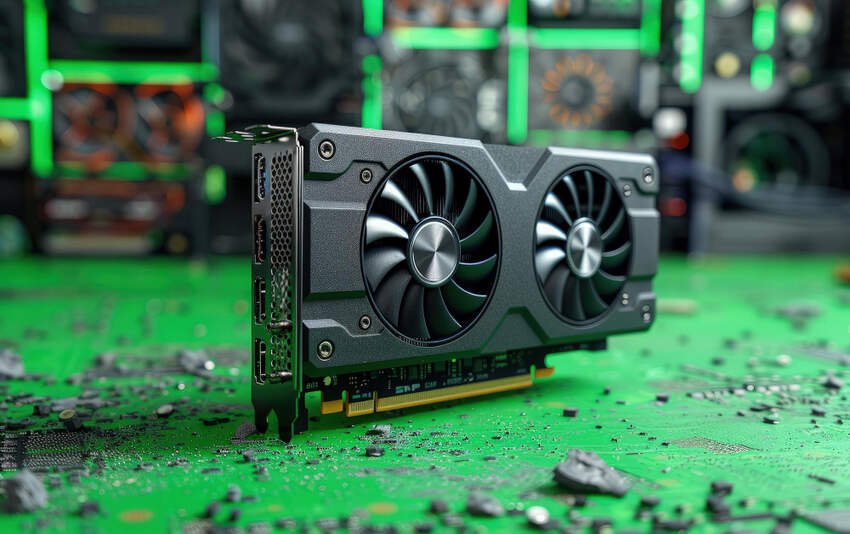The demand for GPU computing has outpaced traditional data centers, pushing AI developers toward new horizons of scalability. With cloud GPU NVIDIA platforms, the once-unreachable H100 and H200 cards are now accessible to anyone—removing barriers between powerful infrastructure and human innovation.
The Rise of Scalable GPU Infrastructure
For years, running large-scale AI workloads required owning expensive GPU clusters or reserving capacity months in advance. The result was a system where only top enterprises could afford to train and deploy foundation models. Today, cloud GPU NVIDIA solutions have flipped that model.
Developers can now launch H100 or H200 GPUs in seconds through cloud interfaces—achieving near bare-metal performance without the complexity of hardware management. It’s an evolution not just in accessibility but in mindset: computing has become elastic, programmable, and cost-transparent.
This shift empowers every tier of the AI ecosystem—from startups building new models to enterprises optimizing inference pipelines. The goal is simple: give every developer the same power once reserved for global research labs.
Why NVIDIA GPUs Dominate the Cloud Landscape
NVIDIA’s hardware ecosystem remains unmatched for AI performance. Their GPUs are built around CUDA acceleration, Tensor Cores, and deep learning optimizations that make them ideal for both training and inference.
1. Tensor Core Innovation
Tensor Cores deliver enormous throughput for matrix operations, the backbone of neural network computation. Each GPU generation—from A100 to H100 and now H200—doubles down on mixed-precision efficiency, enabling faster model convergence with less energy.
2. Unified Software Stack
The CUDA platform integrates seamlessly with frameworks like PyTorch, TensorFlow, and JAX. This consistency across cloud providers means developers can migrate workloads easily, regardless of hardware location.
3. Advanced Memory and Interconnects
High Bandwidth Memory (HBM3/3e) and NVLink 5.0 enable GPUs to share data at unprecedented speeds. This architecture minimizes latency between nodes and supports massive model parallelism—critical for today’s trillion-parameter LLMs.
4. Global Availability
Major cloud platforms and specialized providers now offer H100 and H200 GPUs across multiple regions. This availability eliminates bottlenecks and ensures compute proximity to global users, improving both training efficiency and inference latency.
Renting NVIDIA GPUs: Flexible Power on Demand
The flexibility to rent NVIDIA GPU resources represents a fundamental change in how AI teams operate. Renting removes the burden of capital expenditure, while offering full access to enterprise-grade performance.
When renting GPUs, developers gain:
- Immediate access to premium hardware: Deploy H100s or H200s instantly without procurement delays.
- Elastic scaling: Expand or shrink clusters dynamically based on training load or user demand.
- Transparent billing: Pay only for active compute hours—no idle hardware, no sunk costs.
- Pre-configured environments: Frameworks and drivers preloaded for instant compatibility.
This rental model fits the modern AI workflow, where experimentation speed and cost control are equally critical. Instead of long-term commitments, developers treat compute as a renewable resource—turning on capacity when needed, then scaling it down to zero.
NVIDIA Cloud GPU Pricing: Understanding the Economics
One of the biggest questions for teams adopting cloud GPUs is cost predictability. Transparent NVIDIA Cloud GPU pricing helps balance performance with budget, giving engineers and finance teams a shared understanding of compute value.
Pricing models usually depend on four factors:
- GPU Model: H100s and H200s are premium options for large-scale training and inference, while A100s remain cost-effective for mid-tier workloads.
- Usage Duration: Hourly or per-minute billing offers flexibility; reserved capacity reduces long-term costs.
- Storage and Networking: High-speed interconnects and data egress affect total pricing.
- Provider Tier: Specialized GPU cloud providers often undercut hyperscalers by focusing exclusively on AI workloads.
In many cases, newer GPUs like the H100 outperform older models so efficiently that total runtime costs are lower—despite higher hourly rates. This efficiency-first pricing dynamic encourages smarter, not just bigger, computing.
How Cloud GPU NVIDIA Empowers Developers
Cloud-based NVIDIA infrastructure has redefined what’s possible in AI research and production. It combines world-class performance with operational simplicity.
Speed Without Compromise
H100 and H200 GPUs offer breakthrough compute density. Their advanced Tensor Cores accelerate LLMs, diffusion models, and transformer-based architectures by orders of magnitude. Training tasks that once took days are now complete in hours.
Consistent, Global Infrastructure
Developers can deploy identical environments across multiple regions. This consistency ensures reproducible results, regardless of geography, and simplifies cross-team collaboration.
Lower Operational Burden
No physical servers, no cooling systems, no manual upgrades. The cloud provider manages all hardware-level maintenance, allowing teams to focus exclusively on model design, data quality, and optimization.
Integrated Tools and Monitoring
Cloud dashboards now provide real-time visibility into GPU utilization, temperature, and cost tracking. Engineers can pinpoint inefficiencies, rebalance workloads, and scale instantly—all from a unified control plane.
Practical Scenarios for Using Cloud GPUs
The most successful AI teams treat compute as a strategic tool, not a fixed asset. NVIDIA-powered GPU clouds open doors across multiple domains:
- LLM Training and Fine-Tuning: Distributed training across H100 clusters accelerates convergence for large language models.
- AI Inference at Scale: Serving models through low-latency cloud APIs ensures global reach without latency trade-offs.
- Research and Experimentation: Scientists can spin up high-memory nodes for exploratory runs and release them after testing.
- Rendering and Simulation: High-end GPUs handle complex rendering, video generation, or physics simulations far faster than CPUs.
Each of these workloads benefits not only from speed but also from cost elasticity. Compute becomes event-driven—available exactly when needed and gone the moment the task ends.
Choosing the Right NVIDIA Cloud GPU Setup
Selecting the right GPU configuration depends on the project’s scale, latency requirements, and model complexity.
- H100 Clusters: Ideal for large-scale training and transformer inference. Support FP8 precision for extreme efficiency.
- H200 Clusters: Built for next-gen workloads, offering expanded memory (141GB HBM3e) and higher interconnect bandwidth.
- A100 Clusters: Balanced for affordability and performance, well-suited to mid-range training or fine-tuning tasks.
When planning infrastructure, teams should also consider complementary factors like NVSwitch interconnect topology, disk IOPS, and network latency between regions. These small details often dictate performance parity between cloud and on-prem systems.
Performance Optimization in NVIDIA Cloud Environments
Running models efficiently in a cloud GPU Nvidia setup means understanding how to extract the maximum value from each GPU cycle. Developers focus on three main layers of optimization:
- Model-Level Optimization: Quantization, pruning, and mixed precision training reduce computational load without sacrificing output quality.
- Framework-Level Optimization: Leveraging PyTorch 2.0’s TorchInductor or TensorRT for automatic graph fusion can drastically reduce kernel overhead.
- System-Level Optimization: Proper GPU affinity, batch sizing, and caching can improve utilization by 20–40% across distributed systems.
Advanced users also use compilers like Triton or DeepSpeed to generate fused GPU kernels, pushing performance closer to theoretical hardware limits.
Why Elastic Compute Beats Fixed Infrastructure
Elastic GPU compute offers far more than convenience—it’s a philosophical shift toward efficiency. Traditional on-prem servers remain idle up to 80% of the time. Cloud elasticity ensures that every active GPU contributes directly to output.
Key benefits include:
- Dynamic Scaling: Automatically adds or removes GPUs based on real-time load.
- Usage Transparency: Track utilization down to individual tasks for precise billing.
- Energy Efficiency: Reduces wasted power through load-aware scheduling.
The outcome is a win-win: faster performance and lower total cost of ownership. Elasticity transforms infrastructure from a static investment into an adaptive service.
Integrating Cloud GPUs Into AI Pipelines
Cloud GPUs are now central to modern machine learning pipelines. Teams no longer treat cloud and local environments as separate systems—they’re unified through orchestration tools and API-driven deployment.
A typical pipeline includes:
- Data preprocessing and upload to distributed storage.
- On-demand provisioning of GPU clusters.
- Model training or fine-tuning with automatic scaling.
- Real-time monitoring of cost and performance.
- Deallocation of resources once workloads are complete.
This workflow ensures zero waste and continuous availability. For multi-region companies, workloads can even route dynamically to the nearest data center for the lowest possible latency.
Within these architectures, frameworks that simplify scheduling and runtime orchestration—like those explored in cloud GPU Nvidia infrastructure—are rapidly becoming industry standards. They bridge the gap between engineering complexity and seamless deployment.
The Future of GPU Compute: Democratization and Efficiency
Cloud GPUs represent a long-term shift toward democratized intelligence infrastructure. As costs fall and hardware advances, every developer gains access to supercomputing power. H100 and H200 GPUs are only the beginning.
Upcoming architectures promise more energy efficiency per FLOP, real-time reconfiguration between precision modes, and deeper integration with AI-specific memory fabrics. Combined with decentralized compute markets, this future will make access to power as seamless as access to the internet.
In the next decade, compute will be viewed not as infrastructure but as an ambient resource—available anywhere, on demand, and billed by usage seconds. That’s the future NVIDIA’s cloud ecosystem is quietly enabling today.
Conclusion
The evolution of cloud GPU NVIDIA platforms has fundamentally changed how AI innovation happens. By allowing developers to rent NVIDIA GPU resources on demand and explore transparent NVIDIA Cloud GPU pricing models, these systems dissolve the barriers that once separated ideas from execution.
The result is a world where anyone—from a solo developer to a global enterprise—can access H100 or H200 performance instantly. Affordable, elastic, and infinitely scalable, NVIDIA’s cloud infrastructure marks the next stage of computing freedom: a world where limits no longer define possibility.
Read Dive is a leading technology blog focusing on different domains like Blockchain, AI, Chatbot, Fintech, Health Tech, Software Development and Testing. For guest blogging, please feel free to contact at readdive@gmail.com.





